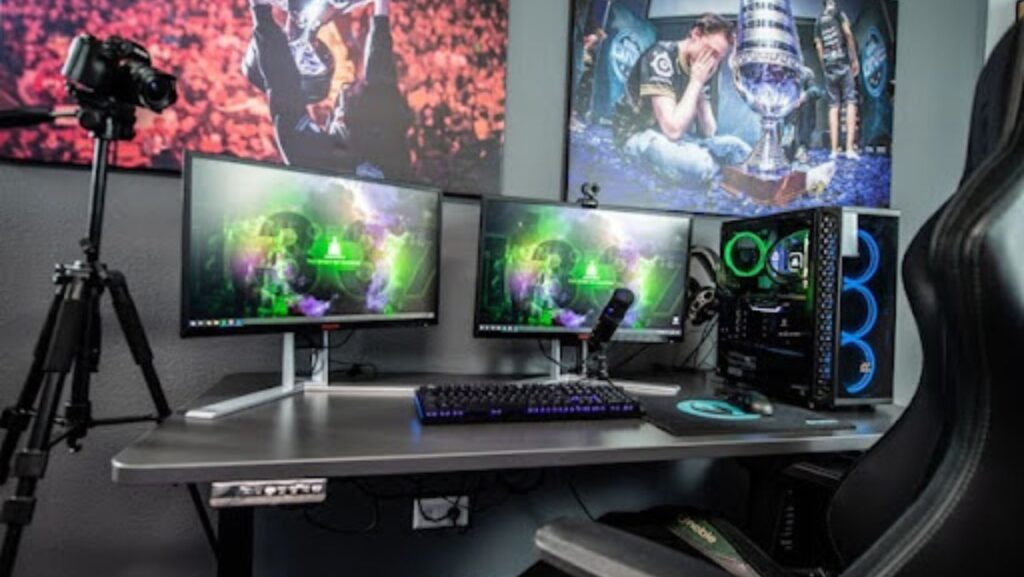Blockchain technology brings many benefits to the gaming industry, ranging from the security of cryptocurrency transactions to true ownership of in-game items. The technology is also the basic framework behind the play-to-earn (P2E) model, which rewards players for playing their favorite games. All of these benefits, and more, are perks from the introduction of decentralization in gaming, especially the establishment of decentralized gaming platforms.
Cryptocurrencies have always been very popular for investment purposes. Anyone can either find a new and cheap crypto to purchase or invest in established assets when prices fall and wait until a sustained rally before selling. However, in addition to investment, these assets have found new use, powering the very pulse of decentralization in the gaming industry.
Understanding Decentralized Gaming Platforms
The core tenet of decentralized gaming platforms is true ownership. The model is a significant departure from traditional options plagued with centralized control and limited elbow room for players. In decentralized gaming, the power of blockchain technology, through a distributed ledger system and immutable records, allows users to truly own in-game assets to do as they please. The use of blockchain protects players from centralized control, encouraging increased participation and creating a vibrant community. Generally, games with large and growing communities are generally more likely to be successful.
Decentralized gaming platforms are mostly run by smart contracts. These self-executing programs automatically run when conditions directly written into their code are met. Smart contracts help to automate these platforms so that there is no real need for human interference. Also, the contracts enable trustless operations by automating the distribution of rewards and transaction processing.
Players use supported cryptocurrencies to purchase and own in-game assets. These assets are usually represented as non-fungible tokens (NFTs) and may be in-game currency, skins, medals, or artifacts. The interaction between the players and the blockchain happens via decentralized applications (Dapps) built on networks like Ethereum and Solana. Some of the largest blockchain games, like Axie Infinity, operate on the Ethereum network and use tokens compatible with the ERC-20 standard. DappRadar data shows that the number of Axie Infinity NFT sales crossed 26,000, worth $449,500 across 7 days, despite a decline in network activity.
Benefits of Decentralized Gaming Platforms
Decentralized gaming platforms offer the following benefits to players:
- True Ownership: The ability to truly own in-game assets is a significant advantage for the average player. Firstly, owning assets accords players a sense of belonging in the game’s ecosystem. In addition, true ownership opens up a new income stream for the average player, especially if the asset or NFT has value outside the game’s ecosystem. Where this is not the case, players can still exchange or sell their assets to others.
- Transparency: Decentralized gaming brings a new level of transparency to the gaming industry. Since the entire ecosystem is powered by blockchain technology, anyone can freely view or audit records on the distributed ledger. This provides a sense of security and ensures trust between players since fraud is unlikely.
- Privacy: Decentralized games usually let users register and sign in simply by connecting external crypto wallets. This way, players are assured that their data, including personally identifying information, amount spent, and wallet balances, are privately held.
Drawbacks of Decentralized Gaming
Despite the amazing perks, decentralized gaming platforms suffer a few challenges, including:
- Scalability: This is a general problem many blockchain networks face, which makes it difficult for the platforms to handle a large volume of players simultaneously. Scalability issues significantly limit the game’s user base and community, eventually stifling growth or discouraging users from continuous interactions. In addition, periods of network congestion cause transaction fees to rise considerably.
- Technical Knowledge: Decentralized gaming has a high entry barrier, especially compared to traditional gaming, because users need technical knowledge of cryptocurrencies and blockchain technology. Players must understand digital assets, NFTs, crypto wallets, account security, and how to trade tokens. Learning all of these could be distressing for many.
- Regulatory Problems: The uncertain regulations around cryptocurrencies in many jurisdictions present legal challenges for decentralized gaming platforms. These projects find full compliance difficult because many authorities don’t have robust laws around cryptocurrency and blockchain. In some regions, these laws are available but constantly change, preventing projects from making long-term plans for their communities.
Decentralized Gaming: Looking Ahead
There is much to anticipate in the world of decentralized gaming despite its challenges. Some of the sector’s limitations, including scalability, are already being addressed by technological advancements in individual blockchains. For instance, Axie Infinity built and launched Ronin in 2021 to address scalability issues when user experience tanked because gas fees increased and transactions became slower following a high volume of users. The migration was significantly advantageous for Axie Infinity as the game’s AXS and SLP tokens immediately jumped 80% and 1,000%, respectively. In addition to Ronin, there are other layer 2 networks and sidechains that significantly improve the processing strength of host blockchains.

Generally, the gradual adoption of many cryptocurrencies could spread to decentralized gaming as users would be more willing to consider several other use cases for their assets. If this happens and decentralized gaming becomes more popular, the way gamers play and interact with their favorite titles could change forever.



More Stories
Ranking Playable Casinos in Normal Video Games Throughout The Years
Level Up Your Game: High Tips to Boost Focus
How Brands Are Engaging Audiences Within Gambling